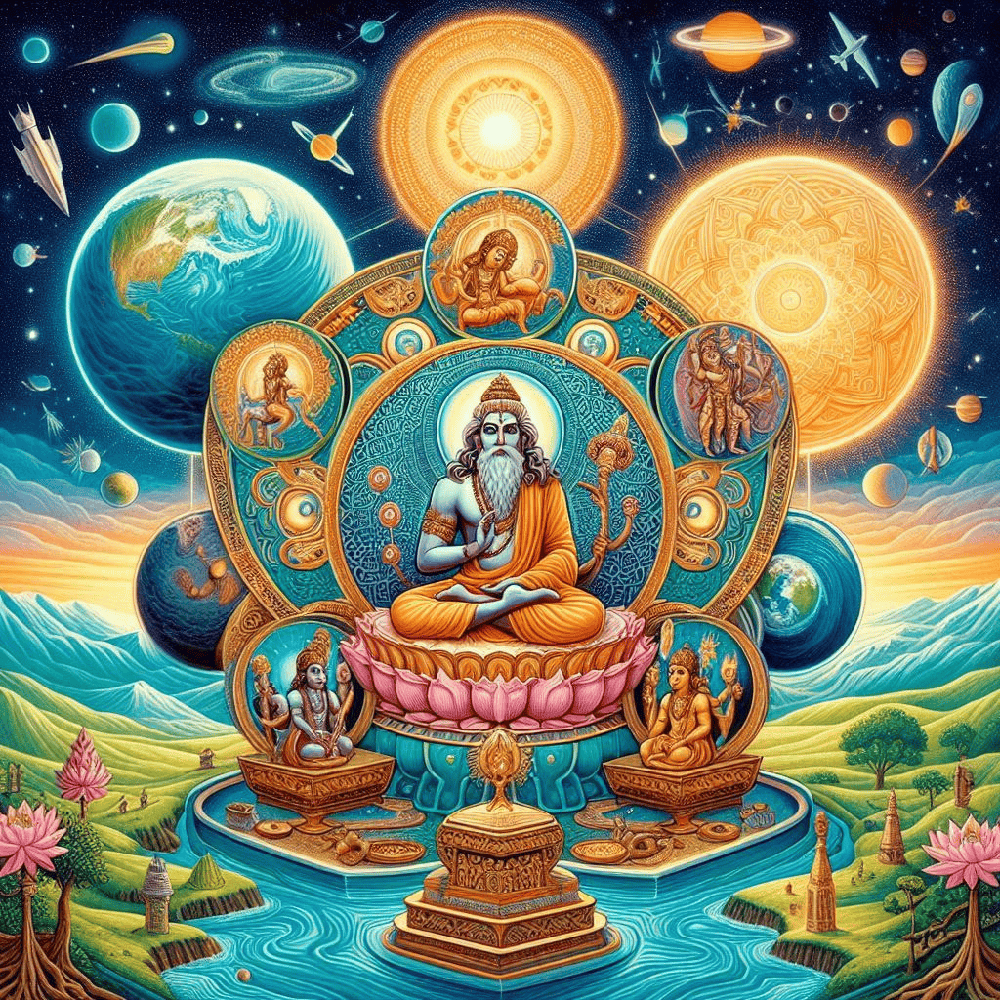Imagine a world where ancient wisdom meets modern spirituality. Welcome to the realm of the Vedas, the sacred texts of Hinduism that have been guiding seekers of truth for millennia. In this blog, we'll embark on a journey to unlock the secrets of the Vedas and explore their relevance in our lives today.
The Significance of the Vedas
Veda - Earliest record of Indo Aryan civilization

The Vedas are the earliest records of Indo-Aryan civilization, containing spiritual knowledge that encompasses all aspects of life. They form the highest religious authority for all aspects of Hinduism and are a respected source of knowledge for humanity in general.
The Vedas are known as the earliest records of Indo-Aryan civilization. These are the most sacred books in India, containing spiritual knowledge that encompasses all aspects of life. The Vedas form the highest religious authority for all aspects of Hinduism and are a respected source of knowledge for humanity in general. The word "Veda" means wisdom or knowledge; these are the words of God conveyed through human speech. Nowadays, all Hindu customs and traditions are regulated by the principles of the Vedas. All Hindu functions, such as birth, death, and marriage, are guided by Vedic rituals.

The Meaning and Origins of the Vedas
The word "Veda" means wisdom or knowledge; these are the words of God conveyed through human speech. Unfortunately, the ancient Hindus did not keep historical records of their religious and political developments, making it challenging to determine the original period of the Vedas. Tradition suggests that the Vedas were revealed to humans by sages, known as the "mantra drashta."
It is very difficult to find the actual origin of the Vedas, as the ancient Hindus did not keep any historical records of their religious and political developments. Therefore, it is challenging to determine the original period of the Vedas. It is thought to be around 1700 BCE, during the late Bronze Age. Tradition suggests that the Vedas were revealed to humans by sages, known as the "mantra drashta." The formal documentation of the Vedas was done by Vyasa Krishna Dwaipayana around 1500 BC.
The Classification of the Vedas
The Vedas are classified into four types: Rig Veda, Sama Veda, Yajur Veda, and Atharva Veda. These four Vedas are commonly known as Chaturveda. The languages of all the Vedas are in agreement with one another. The Brahmans are attached to each Veda.
The Vedas are classified into four types: Rig Veda, Sama Veda, Yajur Veda, and Atharva Veda. These four Vedas are commonly known as Chaturveda. The languages of all the Vedas are in agreement with one another. The Brahmans are attached to each Veda. The Upanishads form the concluding portion of the Veda, known as Vedanta, containing the essence of Vedic teachings. The Vedas guide our religious directions for all ages and will remain the most important and universal among all ancient Hindu scriptures.

The Upanishads and Vedanta
The Upanishads form the concluding portion of the Veda, known as Vedanta, containing the essence of Vedic teachings.
Vedic Rituals and Practices: The Vedas guide various rituals and practices that help individuals connect with the divine and achieve spiritual growth. From daily prayers to sacred ceremonies, Vedic rituals offer a powerful means of self-transformation and spiritual evolution.
Vedic Philosophy and Cosmology: The Vedas offer a profound understanding of the universe and our place within it. They describe the ultimate reality, Brahman, and the interconnectedness of all existence. This philosophical framework provides a deeper understanding of life and our role in the grand scheme.
Vedic Influence on Indian Culture: The Vedas have had a profound impact on Indian culture, shaping art, literature, music, and architecture. From the intricate carvings on ancient temples to the sublime poetry of the Bhakti movement, Vedic influences can be seen in every aspect of Indian culture.
Conclusion:
As we conclude our introduction to the Vedas, we hope you've caught a glimpse of the profound wisdom and spiritual insights they offer. May the ancient teachings of the Vedas inspire you to embark on your own journey of self-discovery and spiritual growth.
Ready to dive deeper into the world of the Vedas? Explore our resources and courses to further your understanding of these ancient texts and integrate their wisdom into your life.
by Rashmita Nayak



